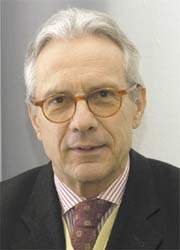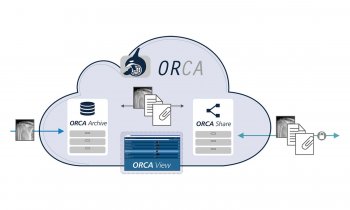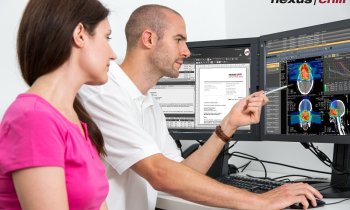The 89th German Radiology Congress and the Joint Radiology Congress of the German and Austrian Radiological Societies
30 April - 4 May Berlin, Germany
In a pre-congress discussion with European Hospital, Joint Congress President Professor Richard Fotter explained why paediatric radiology will be a subject of special interest at the event.

‘One of the topics will be the fluent transition from paediatric radiology to adult radiology. Due to outstanding medical care, patients with severe and complex congenital diseases now have life expectancies that often go far beyond middle age. This means that adult radiology is confronted with medical issues that differ significantly from the usual issues and diseases in adult radiology,’ explained Prof. Fotter. ‘The first generation of those children who underwent highly complex corrective heart surgery are now of adult age. They currently make up 80% of patients who present with conditions after Fallot’s Tetralogy. Paediatric radiologists therefore do not exclusively care for children and adolescents but also adults, i.e. those with congenital diseases and their secondary complications.
‘MRI and CT have become invaluable tools for the follow-up and planning of further corrective surgery, along with ultrasound scanning,’ he pointed out. ‘As paediatric radiology is familiar with pathology, pathophysiology and corrective surgery, by way of its special qualifications it is increasingly assuming responsibility for the imaging requirements of these adult patients. This means that paediatric radiology needs to be partly redefined. The German Radiology Congress will pick up on this issue of changing definitions and responsibilities.’
Asked what technological advances for paediatric radiology are of particular interest, Prof. Fotter said that it is important to point out that paediatric radiology does not define itself via equipment and technology as is often and increasingly happening in adult radiology. ‘Paediatric radiology is defined through the perceived requirements of children and adolescents whose inviolacy is of outstanding importance. New technologies and procedures must be seen as instruments to be used according to requirements. The basis of each use of established or new imaging procedures is optimisation with regards to exposure to radiation and invasiveness. The quality of results must be adapted to the respective medical issue. Ultrasound, MRI, CT and digital imaging procedures are in the foreground of developments. We are at the brink of the clinical introduction of the first 320-slice CTs. The volume acquisition promises significant advantages for the examination of children and adolescents. The acquisition of large volumes with a single rotation will allow us to achieve outstanding image quality and three-dimensional reconstructions of the highest quality with a lower dose compared with Spiral-CT.
‘In MRI, apart from whole-body MRI, which is due to be combined with diffusion technology, we need to mention MRI of the heart and the large vessels, foetal MRI and MRI of the urinary tract in the newborn, children and adolescents. The latter will replace nuclear medical procedures in the medium term and will make IV urography and CT examinations, for this purpose, obsolete. We should also mention MRI in children combined with ultrasound procedures, because these provide an almost complete alternative to the invasive DSA [digital subtraction angiography]. However, fMRI to capture addictive behaviour in adolescents with eating disorders, and Advanced MRI for the musculoskeletal system, are also of particular importance. Particular emphasis here is on diffusion- and perfusion imaging for certain diseases such as Perthes disease.’
30.04.2008










